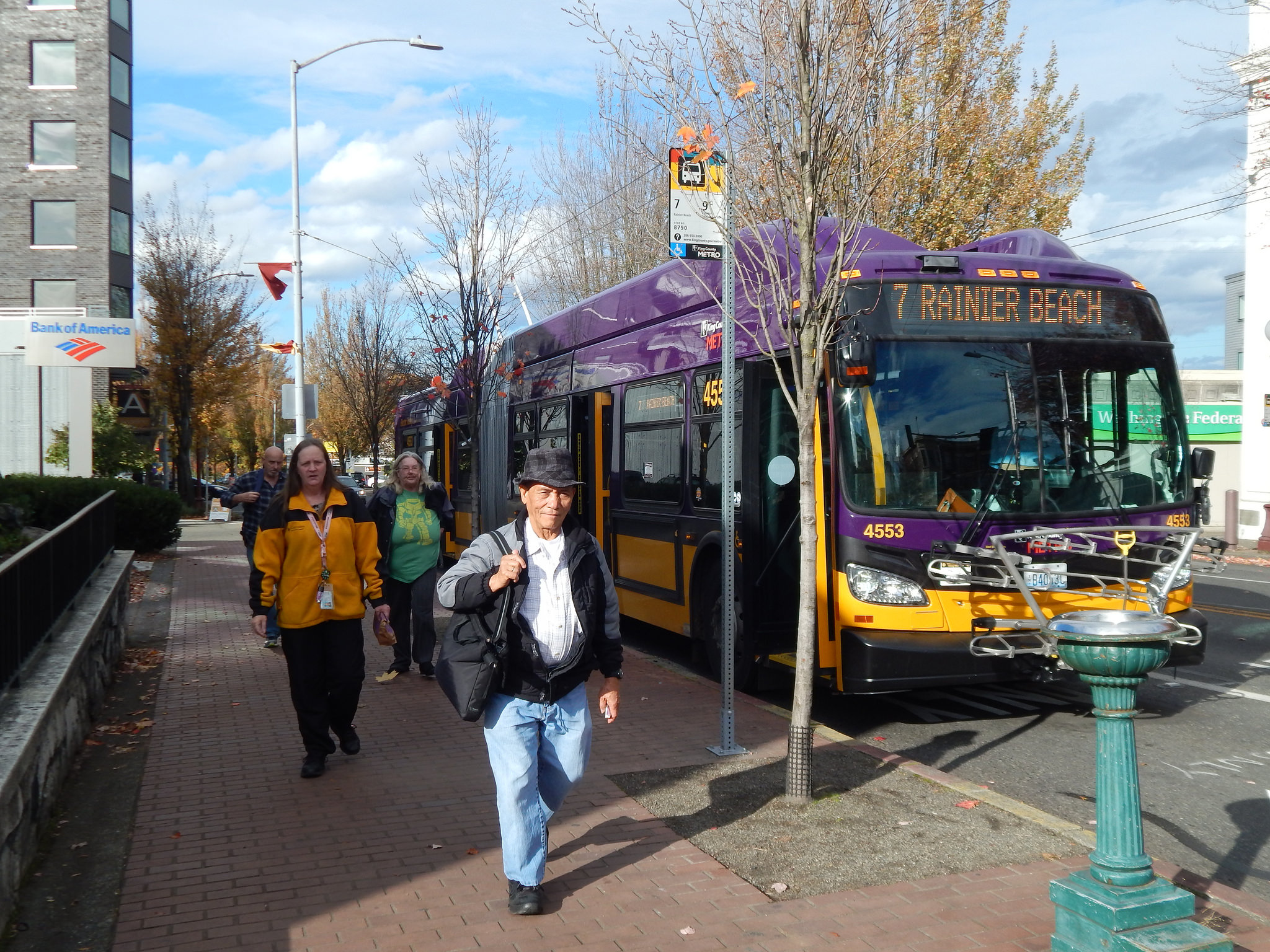
Transportation Choices Coalition believes that building an equitable transit system centered on riders must begin with understanding the needs of current and prospective riders.
Too often, planning for transit focuses on total ridership and commute times to the business districts of large urban cities, rather than the needs of those who rely on it most (for example, those who travel between suburbs, or make trips made to medical appointments, work, childcare, the grocery store, etc). In response to this practice, Transportation Choices and Puget Sound Sage partnered with four community-based organizations to engage directly with Black, Indigenous and People of Color (BIPOC) communities in South Seattle and South King County, and published the findings in a recent report, “More Places; Better Connections.”
Despite setbacks from COVID, we are still investing billions of dollars in public transit infrastructure over the next thirty years as a strategy to reduce carbon emissions, sustain our economy, and connect people to vital services and opportunity. Through our research, we argue that the most effective way to maximize our public investment in transportation is to center racial equity and ensure that BIPOC, people with low-incomes, and people with disabilities are the most direct beneficiaries of these investments.
Findings from the report that can help center racial equity include:
- A mismatch between travel patterns of those surveyed and the current transit network
- Access to transit: Proximity to transit alone does not necessarily mean people will take it or that it provides a useful transportation option.
- Affordability remains an issue; but service and direct routes matter just as much
Though the survey was conducted pre-COVID, current data only underscores the findings. Though Metro ridership levels are down ~70% compared to last year, South King County routes have remained disproportionately high. As we look toward a recovery plan, transit that serves BIPOC communities – many of whom are essential workers keeping our economy afloat – must be at the heart.
A recent CityLab article explains, “the goal of transit, right now, is neither competing for riders nor providing a social service for those in need. It is helping prevent the collapse of civilization.”




